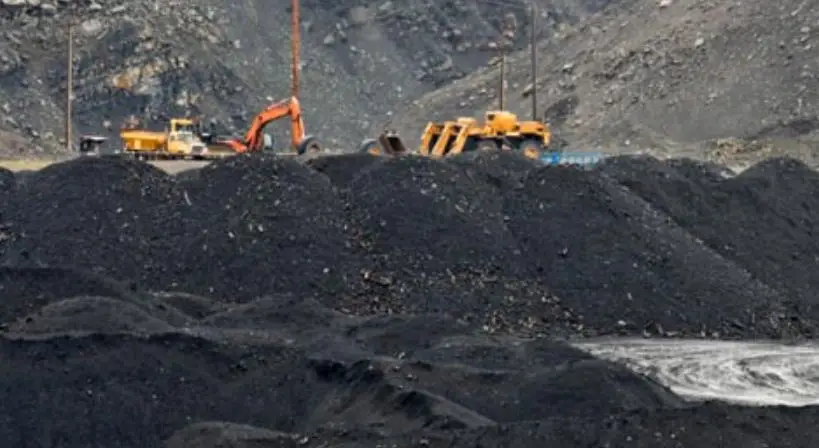Table of Contents
Fly ash and its Advantages and Disadvantages | UPSC – IAS
It is a fine powder, which is the by-product of burning coal in thermal power plants. Its Composition:- Fly ash includes substantial amounts of oxides of silica, aluminum and calcium. Element like Arsenic, Boron, Chromium, lead etc. are also found in trace concentrations.
Fly ash or flue ash, also known as pulverised fuel ash in the United Kingdom, is a coal combustion product that is composed of the particulates (fine particles of burned fuel) that are driven out of coal-fired boilers together with the flue gases. Ash that falls to the bottom of the boiler is called bottom ash.
In the past, fly ash was generally released into the atmosphere, but air pollution control standards now require that it be captured prior to release by fitting pollution control equipment. In the United States, fly ash is generally stored at coal power plants or placed in landfills. About 43% is recycled, often used as a pozzolan to produce hydraulic cement or hydraulic plaster and a replacement or partial replacement for Portland cement in concrete production. Pozzolans ensure the setting of concrete and plaster and provide concrete with more protection from wet conditions and chemical attack.
Fly ash or flue ash use in India | UPSC – IAS
The Ministry of Environment and Forest of Government of India first published a gazette notification in the year 1999 specifying use of fly ash and mandating a target date for all thermal power plants to comply by ensuring 100% utilisation. Subsequent amendments to the notification in 2003 and 2009 had fixed the deadline to be 2014 which as per figures reported in was missed by almost 40%. This has resulted in the latest notification in 2015 which has set December 31st 2017 as the revised deadline to achieve 100% utilisation.
- Out of the approximately 55.7% fly ash utilised, bulk of it (42.3%) goes into cement production whereas only about 0.74% is used as an additive in concrete
- Researchers in India are actively addressing this challenge by working on fly ash as an admixture for concrete and activated pozzolanic cement such as geopolymer to help achieve the target of 100% utilisation. The biggest scope clearly lies in the area of increasing the quantity of fly ash being incorporated in concrete.
- India produced 280 Million Tonnes of Cement in 2016. With housing sector consuming 67% of the cement, there is a huge scope for incorporating fly ash in both the increasing share of Portland Pozzolana Cement (PPC) and low to moderate strength concrete.
- There is a misconception that the Indian codes IS 456:2000 for Concrete and Reinforced Concrete and IS 3812.1:2013 for Fly Ash restrict the use of Fly Ash to less than 35%.
- Similar misconceptions exists in countries like USA but evidence to the contrary is the use of HVFA in many large projects where design mixes have been used under strict quality control.
- It is suggested that in order to make the most of the research results presented in the paper, Ultra High Volume Fly ash Concrete (UHVFA) concrete is urgently developed for widespread use in India using local fly ash. Urgent steps are also required to promote alkali activated pozzolan or geopolymer cement based concretes.
Another government notification, released in February 2019 states that-
- The existing red clay brick kilns located within 300 km shall be converted into fly ash-based bricks or blocks or tiles manufacturing unit within one year from the date of publication of this notification.
- In order to encourage the conversion, Thermal Power Station (TPS)should provide fly ash at the rate of Re 1 per tonne and bear the full transportation cost up to 300 km to such units.
Advantages of Fly Ash Utilization | UPSC – IAS
- Prevent Contamination of Water Resources- by preventing contamination of surface water through erosion, runoff, airborne particles landing on the water surface; of ground water moving into surface waters, flooding drainage, or discharge from a coal ash pond.
- Prevents Soil Erosion- Helps restrict usage of topsoil for manufacturing of bricks.
- Used in variety of construction works- Fly ash is a proven resource material for many applications of construction industries and currently is being utilized in manufacturing of portland cement, bricks/blocks/tiles manufacturing, road embankment construction and low-lying area development, etc. Flyash bricks have been found to show better strength.
- Used in Agriculture- as an agent for acidic soils, as soil conditioner – improving upon some important physicochemical properties of the soil such as hydraulic conductivity, bulk density, porosity, water holding capacity, etc.
- Using fly ash in concrete is environmentally beneficial because it reduces the Portland cement (a major contributor of CO2) required in concrete.
Disadvantages of Fly Ash | UPSC – IAS
- Slower Strength Gain – Concrete changes from a liquid to a solid a few hours after pouring, but the curing process may take much longer. It continues to gain strength for weeks after its initial setting period. This can cause problems when slow strength gain means delays in construction.
-
Longer Setting Times – Fly ash admixtures can lengthen the time it takes for concrete to set. Sometimes this is desirable, particularly in hot weather which speeds up concrete set times, but at other times it is an inconvenience and can cause delays in construction. Other admixtures may be necessary to adjust the set time of the concrete, depending on the percent fly ash in the mixture and the outside temperature.
-
Air Content Control – Concrete is susceptible to damage from freeze/thaw cycles if it does not contain air. Fly ash reduces the amount of air entrainment, and concrete mixtures high in fly ash often require more air-entraining admixture.
-
Seasonal Limitations – The winter season is problematic for concrete pouring, and mixtures high in fly ash are even more susceptible to low temperatures.
-
Color Variability – The structural effects of fly ash may be more critical, but cosmetic concerns also affect its use in concrete. It is more difficult to control the color of concrete containing fly ash than mixtures with Portland cement only.




